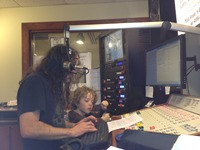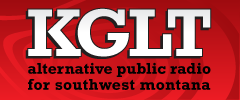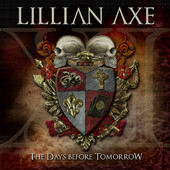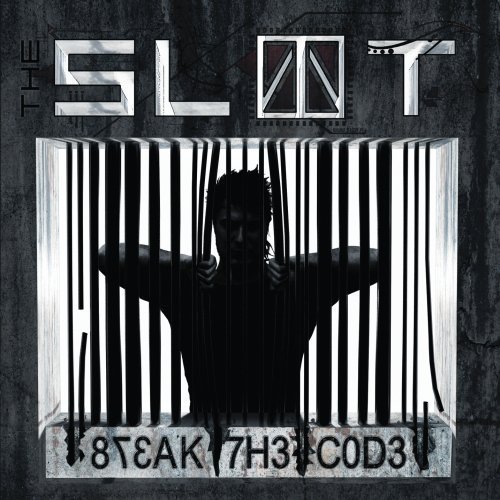 My life as a DJ started mostly on a whim. It just happened that I learned of KGLT's apprentice class about two weeks for the summer session started. The timing was perfect; there was no opportunity to think too hard before committing. Because of that, I really didn't have a motive or justification for becoming a DJ. It was a chance occurrence, an interesting opportunity that I couldn't pass up.
My life as a DJ started mostly on a whim. It just happened that I learned of KGLT's apprentice class about two weeks for the summer session started. The timing was perfect; there was no opportunity to think too hard before committing. Because of that, I really didn't have a motive or justification for becoming a DJ. It was a chance occurrence, an interesting opportunity that I couldn't pass up.
Looking back now, however, there are a few clear reasons that I continue to DJ at KGLT despite the hours of preparation and the late nights in the studio. To better express those benefits, I need to describe my biweekly routing as I prepare for and then deliver my show.
The cycle begins when I decide on a theme for the show. Sometimes that's easy, when my show is near Halloween or Christmas. Other times, I focus on favorite guitarists or bands that have influenced me. Some weeks I just decide to play whatever feels right. That said, in this article I want to describe an approach that has kept me going for months worth of shows. KGLT has their CDs and LPs filed in different categories, much like a public library. There's an impressive array of rock, jazz, blues, country, bluegrass, etc. There's also a small plastic bin for each style that houses the new releases. My category of choice is "Loud Rock" encompassing all sub genres of metal, plus some punk and heavier alternative bands. Although I have a good collection of music, KGLT's library includes a large number of bands and albums that I've never heard of. After the first few months when I was drawing mostly from my own collection, I reached a point where I needed to mix in a generous helping of new material. That's where my goal began...
I decided to make my way through every loud rock CD at KGLT and evaluate each one for use on my show. My goal was to accomplish that fairly quickly, making "Yay" or "Nay" decisions efficiently. That way I can evaluate enough albums in two weeks to prepare a show entirely out of KGLT material. The key step for me is spending 3-5 hours at KGLT previewing one CD after another. The first level of filtering is always easy. I'll listen to the beginning of a few songs, if any of them grab me, then I jump into the middle of a song, listen to some vocals and try to find a hook that gets my attention. The easy "Nay" decisions for me are songs that fail my "melodic" criterion. Generally that means musical forms with only guttural vocals (screams and growls) get nixed quickly, and that tends to remove about 50% of the albums I review with only a minute or two of review on each. Sometimes things bog down a bit, when I run across bands like In Flames, Amaranthe or the SLoT, where gutturals are used in combination with melodic vocals. I'm typically happy with a balanced approach of that sort, but quick scanning can sometimes give the wrong impression, since songs will often use gutturals at the beginning of a song and shift to melodies in the hook. Bands like that can often take more like 3-5 minutes. Melodic death metal can fool me in the opposite direction: the instrumental parts at the beginning of each song will sound great, sometimes reminiscent of heavier power metal bands, but when the guttural vocals kick in I realize the band is not in my wheelhouse.
Once a band or album makes it onto my "keeper" list, then it's a matter of picking a song. Sometimes I'll scan through the album in search of something that grabs me. Sometimes I'll look in iTunes for songs that have gotten a lot of listens or read through the band's Wikipedia entry to see if any songs played a key role in their success. Having picked one or a few potential songs, then I listen and pin down the song for my set. I keep track of band name, album, song title, track number and track duration in a form that I can quickly migrate into a spreadsheet.
After I've collected roughly enough songs for a full 3-hour show, I pull my data entries into a spreadsheet and start arranging my show. There are some restrictions that I need to factor into the playlist:
At the top of each hour, we have to announce the station ID and thank that hour's underwriters
Two other times during the hour we need to make public service announcements (PSAs) and play promotional clips
Factoring all that in, I've found that around 2 hours and 42 minutes worth of songs is what I need for a full show, roughly 54 minutes for each hour. Using that knowledge, I start arrange the songs in an order that works for my mood, trying to create three clearly defined blocks of around 54 minutes each. Within those blocks I try to find three groupings of 3-5 songs each, such that I have a PSA/promo slot around 20-25 minutes after the hour and another one at 35-40 minutes after the hour. I add some additional annotations to the spreadsheet to make the breaks stand out and make it easy for me to find the song, whether it's on my own (burned) CD or on one of KGLT's CDs. If I'm bringing any material from my iTunes collection, I burn those songs to 2 sets of identical discs. That allows me to segue between songs, even if I decide at show time to reorder some songs or skip others.
 Once I've prepared my playlist spreadsheet, burned any discs from my personal collection and collected any of my own CDs that I have readily available, then I set everything aside until its time for my show. Typically I reach the KGLT studio around 11:30pm. Most nights, Adam (Kish) is in the studio when I get there. Before I do anything else, I go through the new Loud Rock bin and the Loud Rock drawers, pulling any CDs I need for my show. I stack the CDs in the order I plan to play them, inserting my own CDs as needed. After that I chill for awhile and catch up with Adam. We often talk about metal, Iron Maiden, Thin Lizzy, etc. It's always fun talking to someone else that loves heavy music, has eclectic taste and likes talking about it.
Once I've prepared my playlist spreadsheet, burned any discs from my personal collection and collected any of my own CDs that I have readily available, then I set everything aside until its time for my show. Typically I reach the KGLT studio around 11:30pm. Most nights, Adam (Kish) is in the studio when I get there. Before I do anything else, I go through the new Loud Rock bin and the Loud Rock drawers, pulling any CDs I need for my show. I stack the CDs in the order I plan to play them, inserting my own CDs as needed. After that I chill for awhile and catch up with Adam. We often talk about metal, Iron Maiden, Thin Lizzy, etc. It's always fun talking to someone else that loves heavy music, has eclectic taste and likes talking about it.
Then, somewhere around 11:55pm, Adam starts playing his last song of the night. He clears out his gear and CDs and he submits his playlist (more on that shortly). Then I move my stuff into place, near the 3 CD players and the console. I fill out some paperwork needed from all DJs as part of having a show at KGLT and put the first two CDs I plan to play in the empty players (Adam's last song is typically in one of the players). I get the songs queued up, so that I'm ready to go. Usually Adam's last song ends right around the top of the hour and I'm on my way.
In the last minute before my show, I switch to headphones and activate the mic but leave it potted down (i.e. the gain is all the way off). I also bring up the level on the channel for my first song, usually around -5 dB on the board. Then, just as Adam's song is dying away I bring up the mic gain, read off the station ID, announce the weekend weather and thank the underwriters. The weather information is available on the main screen of the in-studio computer (a Windows PC); the underwriter info is displayed on the side screen of the same computer. At the end of my announcements I hit the play button on the console and start the music.
The console makes it easy to listen to the beginning of each song prior to playing it, using the Cue channel. So, as one song is playing, I'm listening to the next one and deciding whether a slow crossover fade is in order or the next song needs to kick off on a dime. I segue my way through the first block of 3-5 songs, while taking care of another KGLT DJ responsibility: entering band names, album names, song titles and "new or not?" into the playlist app on the studio PC. We need to track all the songs we play so that the radio station pays appropriate royalties. Those same playlists are also posted on KGLT's website. Then, as I'm playing the last song before a PSA break, I once again switch to headphones, get the mic ready and wait for the song to tail off. Then I read the PSAs, announce the last block's songs and fire off the next song.
The pattern repeats for my next block of songs, although perhaps this time I'll use prerecorded PSAs and promos, which are accessed on the studio PC. I still announce the prior block's songs myself and then kick of the last block of the hour, which takes me back to the top of the hour. At that point, my routine is very similar to the beginning of my show (station ID, announce underwriters) but I don't do the weather, and I do announce the songs from the previous block. That second hour and the third hour are very similar except as my show winds down after the third hour.
At the end of my show, no one else is coming in until 6am. As a result, less than a minute before my last song ends, I cue up SAM, the computerized DJ and crossfade at an opportune moment. SAM automatically cycles through songs, plays PSAs and promos, and carries over until the morning DJ comes in at 6am. SAM uses voice synthesis, and she sounds a little strange, but she does a good job filling time and she's happy to tell you that she plays "some smooth jazz". Once SAM is running, I refile all of the KGLT CDs I used. I also burn copies of my show to CD to take home (that way Nancy can hear my show without staying up). Then it's time to turn off all non-essential lights, back down the studio volume and the two other speaker systems in the facility, pack my bags and go home.
It's often tough to get to sleep after my show. I'm usually pretty amped. Often, as I'm trying to settle I start having ideas for my next show. And thus, the cycle repeats itself.
 Recently, Lillian Axe's February 2012 release, "The Days Before Tomorrow", arrived in KGLT's new loud rock bin. The front cover art immediately got my attention, although I reserved judgment until I previewed some songs. Often, the higher the ratio of skulls to surface area, the more likely the album is hardcore death metal, and therefore falls outside my melodic needs. As always, though, I gave the album a chance, and was immediately rewarded. I've been playing songs from the disc ("The Great Divide", "Lava On My Tongue", "Death Comes Tomorrow") ever since and it just keeps growing on me.
Recently, Lillian Axe's February 2012 release, "The Days Before Tomorrow", arrived in KGLT's new loud rock bin. The front cover art immediately got my attention, although I reserved judgment until I previewed some songs. Often, the higher the ratio of skulls to surface area, the more likely the album is hardcore death metal, and therefore falls outside my melodic needs. As always, though, I gave the album a chance, and was immediately rewarded. I've been playing songs from the disc ("The Great Divide", "Lava On My Tongue", "Death Comes Tomorrow") ever since and it just keeps growing on me. Post a Comment → Posted on
Post a Comment → Posted on  Wednesday, May 2, 2012 at 4:40PM
Wednesday, May 2, 2012 at 4:40PM  KGLT,
KGLT,  Lillian Axe,
Lillian Axe,  Now Orleans,
Now Orleans,  Ratt,
Ratt,  Robbin Crosby,
Robbin Crosby,  Steve Blaze | in
Steve Blaze | in  Music Review
Music Review 


